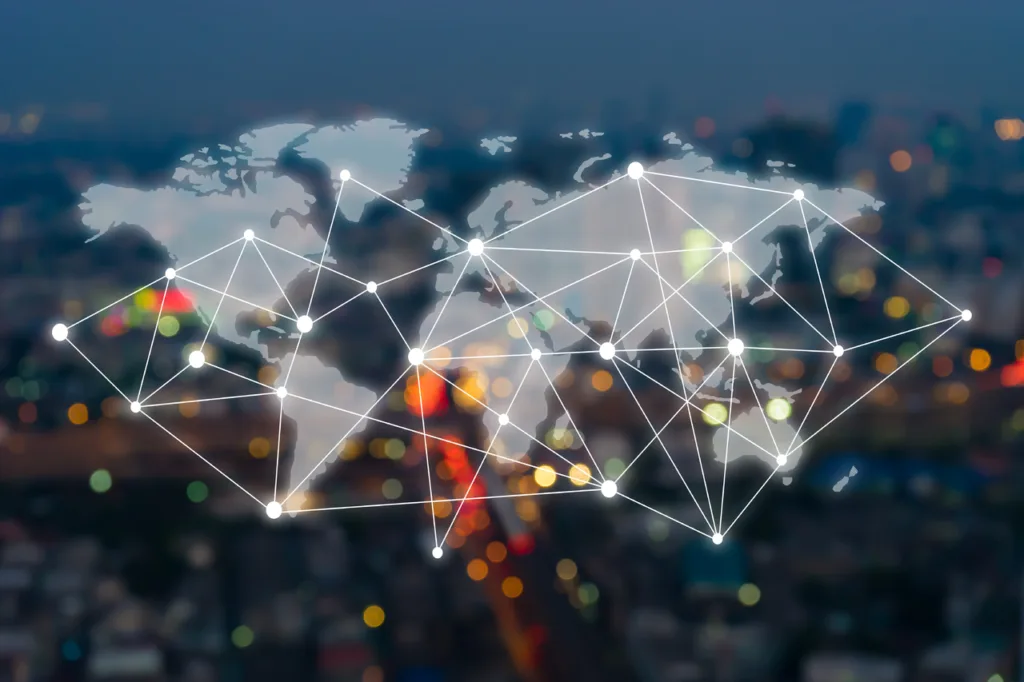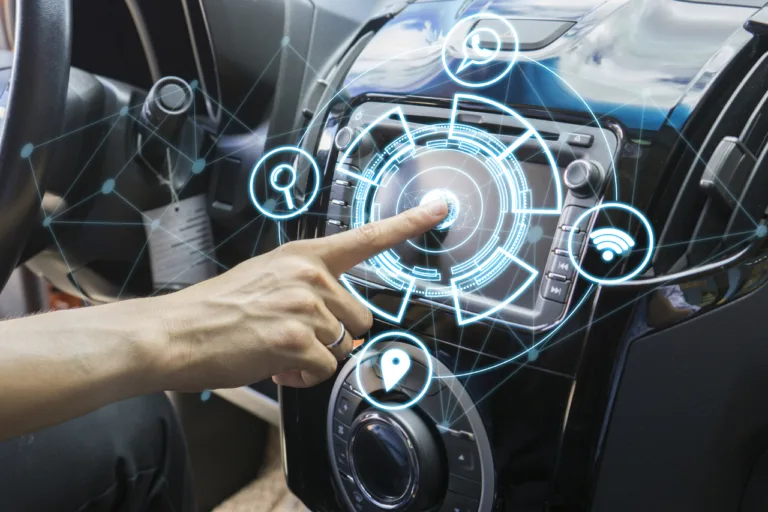Understanding the Basics of IoT
The Internet of Things (IoT) refers to the interconnected network of physical devices, vehicles, buildings, and other objects embedded with sensors, software, and connectivity that enables them to collect and exchange data. These devices can range from everyday objects like home appliances and wearable devices to industrial machinery and even agricultural sensors. The main concept behind IoT is to create a seamless ecosystem where these devices, through their ability to communicate with one another, can automate processes, improve efficiency, and provide smarter and more intuitive functionalities.
One of the core elements of IoT is the use of sensors, which act as the eyes and ears of the connected devices. These sensors can include temperature sensors, motion sensors, light sensors, proximity sensors, and many more, all designed to capture and transmit data to other devices or to the cloud for further analysis. In combination with connectivity technologies like Wi-Fi, Bluetooth, or cellular networks, this vast network of sensors and devices enables real-time data collection and enables the devices to work together in harmony. The proliferation of IoT has paved the way for a new era of innovation, where mundane objects can be transformed into intelligent devices that enhance our daily lives in countless ways.

How INTERNET OF THINGS (IoT) is Transforming Daily Life
The Internet of Things (IoT) has rapidly become an integral part of our daily lives, revolutionizing the way we interact with our surroundings. With IoT, everyday objects are now interconnected, exchanging data and seamlessly communicating with each other. This connectivity has transformed the way we live, work, and play, making daily tasks more efficient, personalized, and convenient.
One area where IoT has made a significant impact is in our homes. Smart devices, such as thermostats, lights, and appliances, can now be controlled remotely through smartphone apps or voice commands. This means that you can adjust the temperature, turn on the lights, or even start your washing machine before you even step inside your house. The ability to automate and control various aspects of our homes through IoT not only enhances comfort but also improves energy efficiency, reducing utility bills and minimizing our environmental footprint.
Exploring the Scope and Applications of IoT
The scope and applications of IoT are vast and diverse, touching almost every aspect of our daily lives. From smart homes and wearable devices to industrial automation and agriculture, IoT has the potential to revolutionize the way we live, work, and interact with the world around us. The interconnectedness of devices and sensors allows for seamless communication and information sharing, enabling greater efficiency, productivity, and convenience. Moreover, IoT has the power to transform industries such as healthcare, transportation, and energy, promising improved outcomes, cost savings, and sustainability. As the technology continues to evolve and mature, we can only expect its scope and applications to expand, opening up new possibilities and opportunities for innovation.
The Role of Sensors and Connectivity in IoT
Sensors and connectivity play a crucial role in the world of IoT, enabling the seamless transfer of data between devices and systems. Sensors are the eyes and ears of IoT, collecting and monitoring various types of information such as temperature, pressure, motion, and even human presence. These sensors collect data in real-time, capturing valuable insights that can be used to optimize processes, enhance decision-making, and improve overall efficiency.
The connectivity aspect of Internet of things (IoT) ensures that all the devices and sensors can communicate with each other, creating a network of interconnected devices. Whether it's through Wi-Fi, Bluetooth, or other wireless technologies, connectivity enables the transmission of data from one device to another, allowing them to work together in a synchronized manner.
This connectivity enables the exchange of data in real-time, facilitating seamless communication and enabling actions to be taken based on the collected data. Without sensors and connectivity, the concept of IoT would not be possible, as they are the building blocks that enable devices and systems to interact and collaborate. With advancements in technology, sensors are becoming more capable and connected devices are becoming more prevalent, further fueling the expansion and potential of the IoT ecosystem.
Unveiling the Benefits and Challenges of IoT
The Internet of Things (IoT) has brought about numerous benefits that have transformed various industries and aspects of daily life. One of the key advantages of IoT is its ability to enhance efficiency and optimize processes. With IoT devices and sensors connected to a network, data can be collected in real-time, allowing businesses and organizations to monitor and analyze information more effectively. This enables them to identify areas for improvement, reduce wastage, and streamline operations, ultimately leading to cost savings and increased productivity.
Furthermore, Internet of things (IoT) has also revolutionized customer experiences by providing personalized and interactive solutions. For instance, in the retail industry, IoT technologies such as smart shelves and digital signage have enabled targeted advertisements and personalized recommendations based on individual preferences and shopping patterns.
This not only enhances customer satisfaction but also boosts sales and strengthens brand loyalty. Similarly, in the healthcare industry, IoT devices such as wearable fitness trackers and remote patient monitoring systems empower individuals to take control of their health and well-being, enabling healthcare providers to deliver more personalized and proactive care.
Despite its numerous benefits, IoT also poses a variety of challenges that need to be addressed. One major concern is security and privacy. With the increased connectivity and data sharing involved in IoT, there is a greater risk of sensitive information being compromised or misused. Therefore, implementing robust security measures, such as encryption and authentication protocols, is crucial to protect the privacy and integrity of IoT systems.
Additionally, the sheer volume of data generated by Internet of things (IoT) devices can be overwhelming, making it essential for organizations to effectively manage and analyze this data. This requires advanced analytics tools and skills to extract meaningful insights and derive valuable information that can drive decision-making and innovation. Overall, while IoT presents immense opportunities, it also requires careful consideration of the challenges it brings.

The Role of Big Data and Analytics in IoT
In the world of IoT, big data and analytics play a crucial role in extracting meaningful insights from the vast amount of data generated by connected devices. As IoT devices continue to proliferate, the volume, variety, and velocity of data generated are increasing exponentially. This presents both challenges and opportunities for businesses and industries across sectors.
Big data refers to the large and complex sets of data that cannot be effectively managed or analyzed by traditional data-processing applications. IoT generates massive amounts of data from various sources, such as sensors, devices, and systems, which need to be collected, stored, and analyzed in real-time. The analysis of this data provides valuable insights that can drive informed decision-making, optimize operations, and enhance user experiences. Analytics, on the other hand, involves the process of analyzing and interpreting the collected data to gain insights, discover patterns, and make predictions. By leveraging big data and analytics in Internet of things (IoT), organizations can unlock actionable intelligence and uncover hidden trends that are otherwise difficult to discern.
Security and Privacy Concerns in the World of IoT
With the rapid advancement of the Internet of Things (IoT), security and privacy concerns have become major topics of discussion. As more devices become connected and share sensitive information, the potential for cyber attacks and data breaches increases. One of the main concerns is that many Internet of things (IoT) devices lack sufficient security measures, making them vulnerable to hacking and unauthorized access. This can lead to serious consequences, such as the theft of personal information, manipulation of device functionality, and even physical harm if connected to critical infrastructure systems.
Another significant concern surrounding Internet of things (IoT) is the potential invasion of privacy. As Internet of things (IoT) devices collect vast amounts of data about individuals and their behaviors, there is a growing unease about how this data is used and who has access to it. The concepts of data ownership and consent become blurred as users may not fully understand or be aware of the extent to which their personal information is being collected and shared. Additionally, there is the risk of unauthorized surveillance and the potential for misuse of personal data by both malicious actors and even the organizations that operate these IoT systems.
Addressing these security and privacy concerns is crucial for the successful, widespread adoption of IoT. Stricter regulations and standards need to be in place to ensure that Internet of things (IoT) devices are built with robust security measures from the start. This includes implementing secure authentication and encryption protocols, regularly updating software to address vulnerabilities, and adopting a defense-in-depth approach by layering multiple security measures. Furthermore, privacy laws must evolve to provide greater transparency and control over personal data, giving individuals the ability to opt out of certain data collection practices and understanding how their information is being used.
Overall, while IoT presents numerous benefits and opportunities, it also brings along security and privacy risks that need to be taken seriously. The collaborative efforts of governments, industry leaders, and consumers are essential to mitigate these concerns and create a safer and more private IoT environment for everyone.
IoT in Healthcare: Revolutionizing the Industry
The healthcare industry has witnessed a remarkable transformation with the integration of IoT technology. IoT in healthcare is revolutionizing the industry by enabling seamless connectivity among medical devices and systems. This connectivity enables healthcare professionals to gather, analyze, and share real-time patient data efficiently, leading to improved medical diagnoses and treatment plans.
One of the key benefits of Internet of things (IoT) in healthcare is the ability to remotely monitor patients. With wearable devices and sensors, healthcare providers can track vital signs and other health parameters of patients from a distance. This allows for timely interventions and reduces the need for frequent hospital visits, particularly for patients with chronic conditions. Moreover, Internet of things (IoT) in healthcare also facilitates the integration of electronic health records (EHRs), making patient data accessible to authorized healthcare professionals across different healthcare settings. This not only streamlines the process of sharing and accessing medical records but also ensures accurate and up-to-date information for better decision-making.
Smart Homes and IoT: Enhancing Comfort and Efficiency
Smart homes have become increasingly popular in recent years, thanks to the advancements in the Internet of Things (IoT) technology. Internet of things (IoT) enables homeowners to connect various devices and appliances in their homes, allowing them to control and monitor these systems remotely. The integration of IoT into smart homes enhances both comfort and efficiency by providing homeowners with greater convenience and automation.
One of the key benefits of Internet of things (IoT) in smart homes is the ability to control different aspects of the house remotely. Through a smartphone or a smart hub, users can adjust the temperature, lighting, and even lock or unlock doors from anywhere. This level of convenience not only enhances comfort but also allows users to save energy by optimizing the use of electrical devices. For example, homeowners can schedule the thermostat to adjust the temperature based on their usual routines, ensuring that energy is not wasted when the house is empty during the day. The ability to remotely control and automate various systems in the house creates a more comfortable and efficient living environment for homeowners.
Future Trends and Predictions for IoT
The future of IoT appears promising, with numerous exciting trends and predictions on the horizon. One key trend is the proliferation of smart cities, where IoT technology will be leveraged to improve urban infrastructure and enhance the quality of life for residents. For instance, connected streetlights can adjust their brightness based on real-time traffic data, reducing energy consumption and improving safety. Additionally, Internet of things (IoT)-enabled waste management systems can optimize garbage collection routes, leading to more efficient operations and reduced environmental impact.
Another significant trend is the integration of Internet of things (IoT) in the healthcare industry. As healthcare providers strive to deliver better patient care, IoT devices and sensors will play a crucial role in monitoring and managing patient health remotely. Connected devices, such as wearable health trackers, can continuously collect and transmit vital health data to healthcare professionals. This real-time information allows for early detection of potential health issues and enables timely interventions, ultimately leading to improved patient outcomes. Furthermore, IoT-powered telemedicine applications can connect patients to doctors and specialists virtually, expanding access to quality healthcare services, especially for individuals in remote areas.
FAQ's
What is IoT?
IoT stands for Internet of Things. It refers to the network of interconnected physical devices that are embedded with sensors, software, and connectivity to exchange data and communicate with each other over the internet.
How does IoT transform daily life?
IoT has the potential to transform daily life in numerous ways. It can automate tasks, improve efficiency, enhance convenience, and provide real-time information. For example, Internet of things (IoT) devices can control home appliances, monitor health conditions, optimize energy usage, and enable smart transportation systems.
What are the applications of IoT?
The scope of Internet of things (IoT) is vast and diverse. It can be applied to various industries and sectors such as healthcare, agriculture, manufacturing, transportation, smart cities, and more. Internet of things (IoT) can be used for remote monitoring, predictive maintenance, supply chain optimization, environmental monitoring, and much more.
What is the role of sensors and connectivity in Internet of things (IoT)?
Sensors are integral components of Internet of things (IoT) devices as they enable the collection of data from the physical environment. These sensors detect and measure various parameters such as temperature, humidity, motion, and light. Connectivity allows these devices to transmit the collected data over the internet, enabling real-time monitoring and control.
What are the benefits and challenges of IoT?
The benefits of IoT include improved efficiency, cost savings, enhanced productivity, and better decision-making. However, challenges such as data privacy and security concerns, interoperability issues, scalability, and complexity of implementation need to be addressed for widespread adoption of IoT.
How does big data and analytics play a role in Internet of things (IoT)?
Big data and analytics are crucial in IoT as they enable the processing, analysis, and interpretation of the massive amount of data generated by IoT devices. By extracting valuable insights from this data, organizations can make data-driven decisions, optimize operations, and improve overall efficiency.
What are the security and privacy concerns in the world of IoT?
IoT poses security and privacy risks due to the interconnected nature of devices and the large volume of sensitive data being transmitted. Concerns include unauthorized access, data breaches, device vulnerabilities, and potential misuse of personal information. Proper security measures and data encryption are essential to mitigate these risks.
How does IoT revolutionize the healthcare industry?
Internet of things (IoT) has the potential to revolutionize healthcare by enabling remote patient monitoring, personalized medicine, efficient healthcare delivery, and real-time data analysis. IoT devices can track vital signs, transmit data to healthcare professionals, and facilitate early detection and intervention, leading to better patient outcomes.
How does IoT enhance comfort and efficiency in smart homes?
IoT enables smart homes by connecting various devices and appliances to a central control system. This allows homeowners to remotely control and automate various functions such as lighting, heating, security systems, and appliances. IoT enhances comfort, convenience, and energy efficiency by optimizing resource usage and providing personalized experiences.
What are some future trends and predictions for IoT?
The future of IoT is expected to witness advancements in areas such as edge computing, artificial intelligence, 5G connectivity, and blockchain integration. Increasing adoption of IoT in industries like agriculture, transportation, and smart cities is anticipated. Additionally, IoT is likely to play a significant role in the development of smart grids, autonomous vehicles, and connected healthcare systems.




